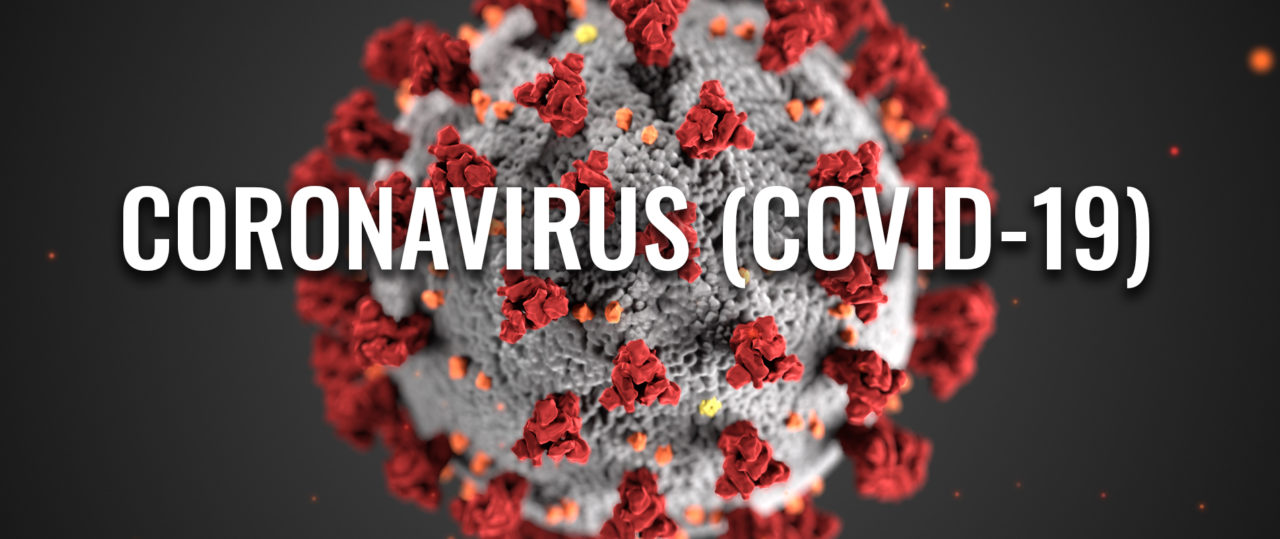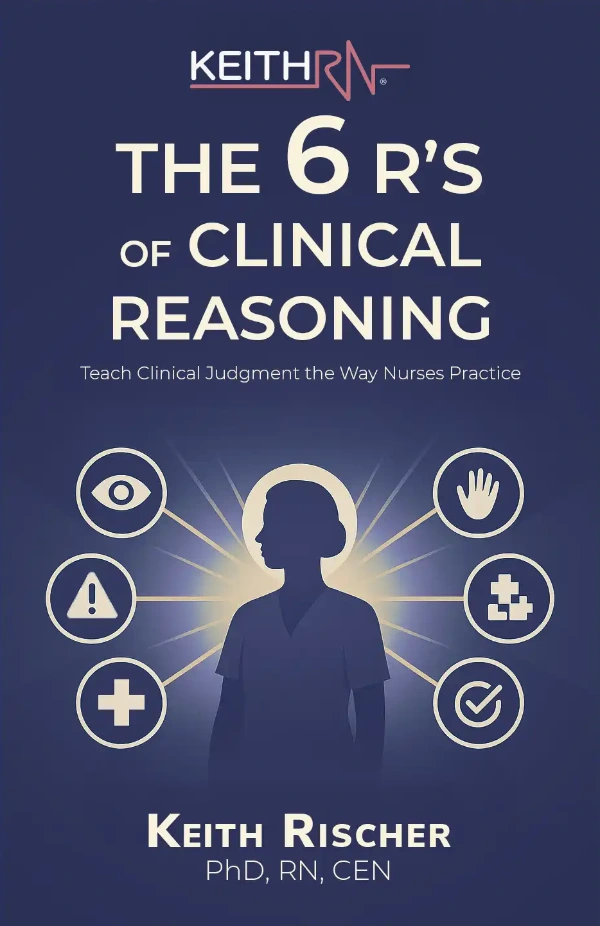
Did you know that case studies are one of the most effective strategies to teach any practice-based profession, including nursing?
A paradigm shift that educators need to embrace is that an unfolding case study is low fidelity simulation.
A well-written case study that emphasizes clinical reasoning replicates the thinking that is required in clinical practice or used in high fidelity simulation but without the practice setting.
To practically demonstrate how a case study can be utilized online as a low fidelity simulation, I will take a portion of the COVID-19 case study I recently completed that begins with a patient who presents to the triage window of your local emergency department.
Use this case study in the following ways:
- post online as a discussion board that unfolds day by day asynchronously
- post the entire writeable PDF for a student to complete and then send back for feedback
- work through together with students if you are having synchronous class online
Opening Scenario
John Taylor is a 68-year-old African-American male with a history of type II diabetes and hypertension who came to the emergency department (ED) triage window because he felt crummy; complaining of a headache, runny nose, feeling weaker, “achy all over” and hot to the touch and sweaty the past two days.
When he woke up this morning, he no longer felt hot but began to develop a persistent “nagging cough” that continued to worsen throughout the day. He has difficulty “catching his breath” when he gets up to go to the bathroom.
John is visibly anxious and asks, “Do I have that killer virus that I hear about on the news?
First Question, a Nurse, Must Ask
Clinical reasoning is a foundational skill that is the thinking in action that a nurse must do as clinical data is discovered.
With this first set of clinical data in the opening scenario, the first and most crucial question, the nurse must answer for this case and in practice is:
What clinical data is RELEVANT and must be NOTICED as clinically significant by the nurse?
This clinical reasoning question is open-ended, just like it will be in practice. No choices. Students either notice what clinical data they have collected is relevant or essential that must be noted and WHY it is clinically significant.
For those who are familiar with Chris Tanner’s model of clinical judgment that is also the essence of the upcoming Generation NCLEX, this single question captures the first step of noticing and the second step of interpreting the significance of clinical data collected.
What did you notice?
In the opening scenario here is a list of highly relevant clinical data that when vital content is understood on COVID-19, it’s clinical significance becomes readily apparent:
- 68-year-old African-American male with a history of type II diabetes and hypertension
- Complains of a headache, runny nose, feeling weaker, “achy all over”
- hot to the touch and sweaty the past two days
- develops a persistent “nagging cough” that continued to worsen throughout the day
- difficulty “catching his breath” when he gets up to go to the bathroom
- John is visibly anxious and asks, “Do I have that killer virus that I hear about on the news?”
What additional clarifying questions do the triage nurse need to ask John to determine if his cluster of physical symptoms is consistent with COVID-19?
There are many additional questions the nurse must ask to determine the significance and cluster the clinical data that is known by asking the following clarifying questions:
- What was your temperature at home when you felt warm, sweaty?
- Do you have any shortness of breath at rest?
- Have you had any known exposure to a person who tested positive for COVID-19?
- Have you been practicing social distancing in the community?
- Does your wife or any recent contact have any symptoms of fever, cough, etc.?
What type of isolation precautions does the nurse need to implement if COVID-19 is suspected? What specific measures must be implemented to prevent transmission?
Current precautions include a combination of contact and droplet precautions that also include eyewear protection as a standard of practice.
Patient Care Begins
John is brought back to a room. As the nurse responsible for his care, you collect the following clinical data:
- T: 100.3 F/38.8 C (oral)
- P: 118 (regular)
- R: 20 (regular)
- BP: 164/88 MAP: 113
- O2 sat: 92% room air
What clinical data is RELEVANT and must be NOTICED as clinically significant by the nurse?
In this scenario all of the vital signs have relevance and also incorporate clinical ambiguity because the temperature is low grade; in the O2 sat is technically normal, but for a patient who has no history of lung disease, is it?
This is the nuanced nurse thinking that students will experience in practice, but best of all can also be PRACTICED in a salient scenario!
Additional Questions
Since I don’t have room in today’s blog to unfold this entire scenario here are just a few other questions that are included in this concise SKINNY Reasoning level that require your students to answer:
- What body system(s) will you assess most thoroughly performing a FOCUSED assessment based on the primary/priority problem? Identify correlating specific nursing assessments.
- What assessment data is RELEVANT and must be NOTICED as clinically significant by the nurse?
- Interpreting clinical data collected, what problems are possible? Which problem is the PRIORITY? Why?
- What nursing priority(ies) and goal will guide how the nurse RESPONDS to formulate a plan of care?
- What is the patient likely experiencing/feeling right now in this situation? What can you do to engage yourself with this patient’s experience, and show that they matter to you as a person?
Implementation Strategies
To implement case-based learning as low fidelity simulation online this concise Skinny Reasoning case study can be posted in chunks online as a discussion board question and assign your class to small groups to discuss that unfolds day by day asynchronously or you could post the entire PDF for a student to complete and then send back for feedback.
If you are teaching classroom synchronously, you could post this case study ahead of time and then have an online faculty facilitated discussion with your students in real-time.
I have created a longer version of this case study titled UNFOLDING Reasoning that is over twice as long and takes three hours for a student to complete, which would be a full day clinical replacement activity if your state has 2:1 simulation to clinical ratio.
Next Steps
To bring salient cases to your online class or clinical use how to get started:
- Go to the homepage of KeithRN where this SKINNY Reasoning case study on COVID-19 is a free download.
- The UNFOLDING Reasoning COVID-19 that can serve as a clinical replacement activity is currently on sale.
- Additional topics are also inside my store all with multiple levels of complexity so you can rock active learning online!
- Go all in! I now have an all-inclusive membership that provides access to over 100 case studies for individual or entire dept. at a discount.
- Want more online strategies? I will be sharing more on how to strengthen online learning through an online conference Practical Startegies for Virtual Online Learning on Tuesday, April 7th.
In Closing
The challenge of the current coronavirus pandemic is an opportunity for nursing education to innovate and do things differently to strengthen student learning.
By using case studies as low fidelity simulation, you can capture the essence of clinical realities and bring your students to clinical online by practicing the thinking required for safe practice!
Using these same principles, you can continue to innovate your traditional classroom by engaging your students with meaningful active learning to develop the clinical judgment required for safe practice and licensure!
Relevant Blogs
Keith Rischer – PhD, RN, CEN
As a nurse with over 35 years of experience who remained in practice as an educator, I’ve witnessed the gap between how nursing is taught and how it is practiced, and I decided to do something about it! Read more…
The Ultimate Solution to Develop Clinical Judgment Skills
KeithRN’s Think Like a Nurse Membership
Access exclusive active learning resources for faculty and students, including KeithRN Case Studies, making it your go-to resource.




